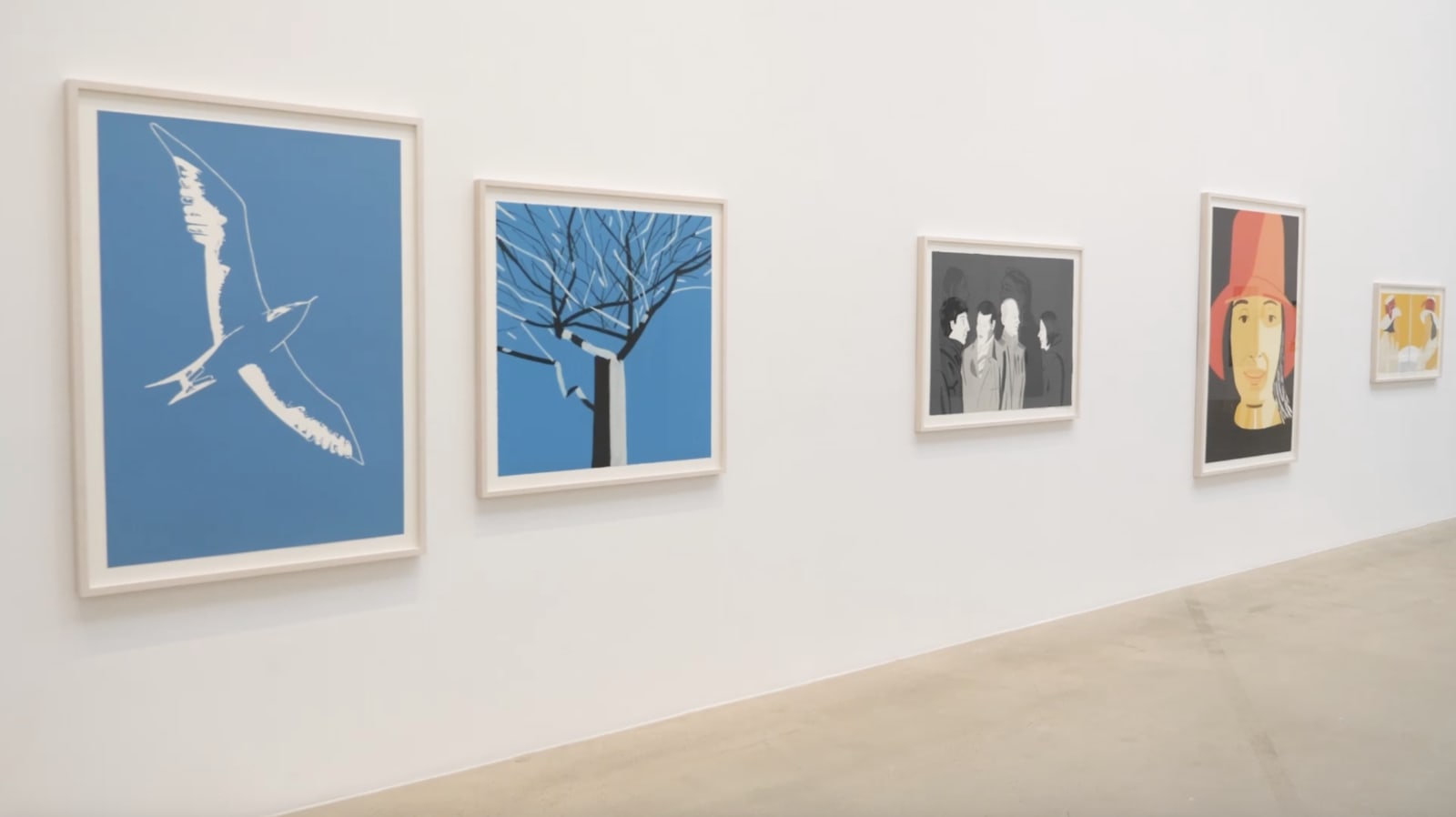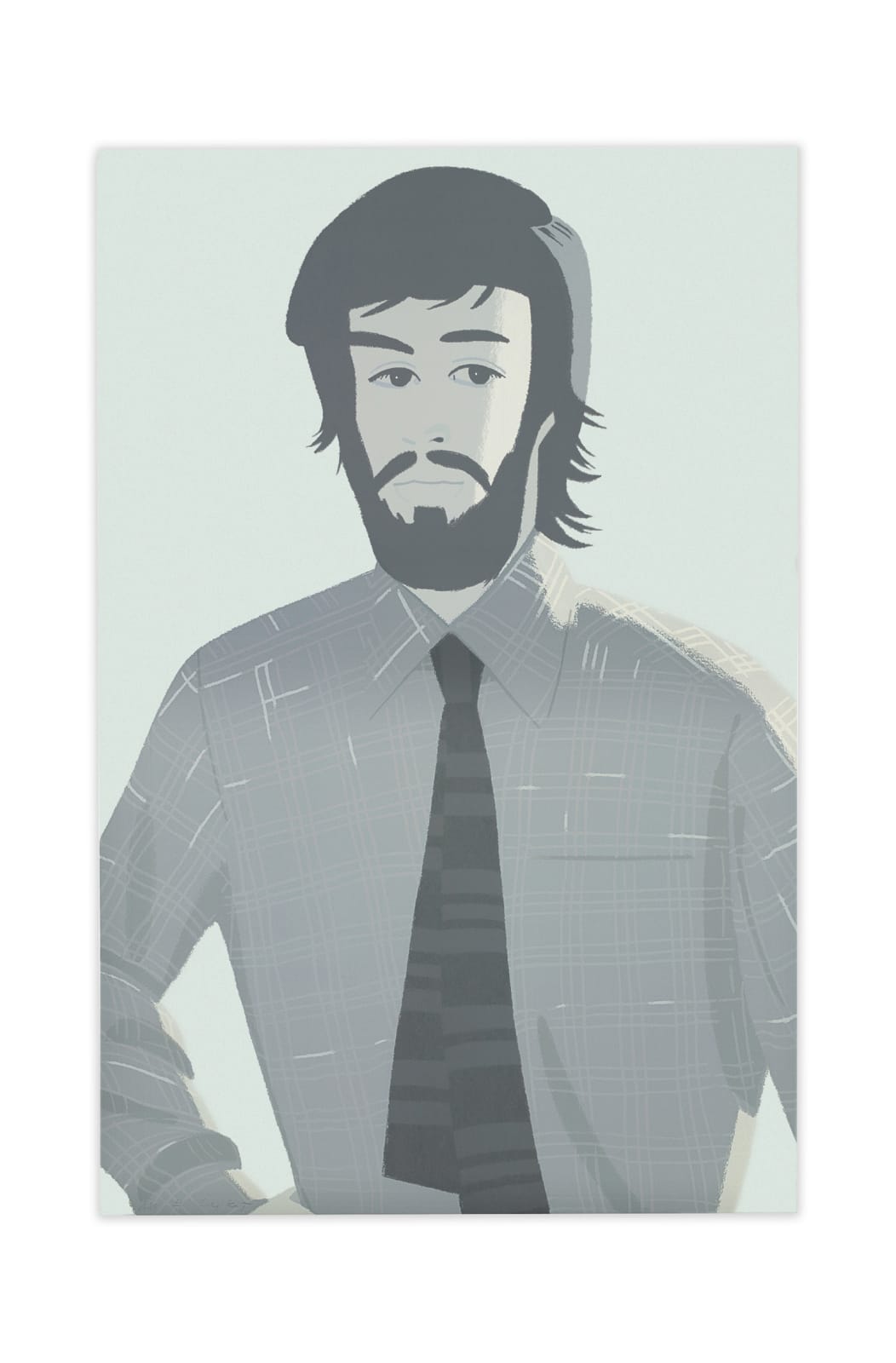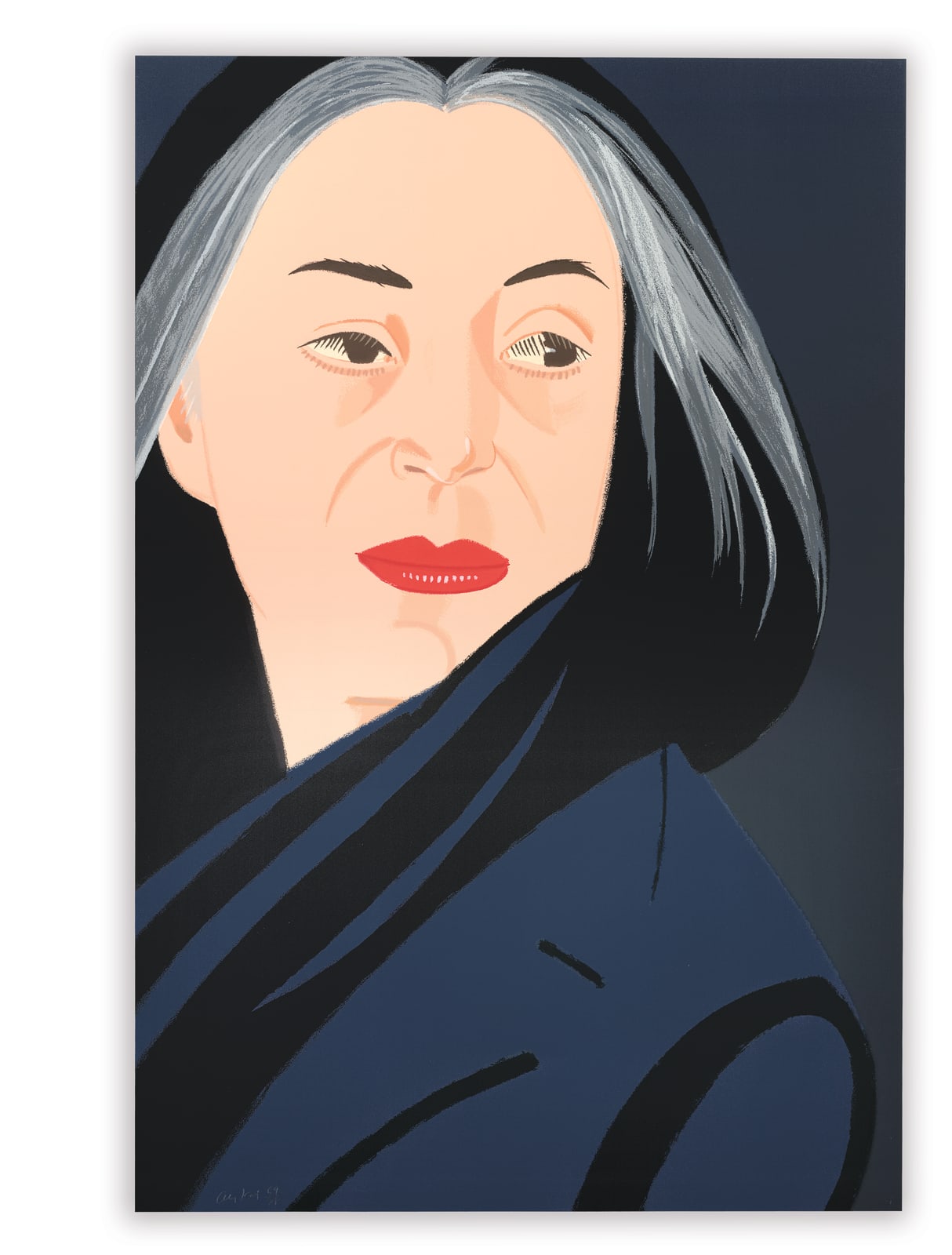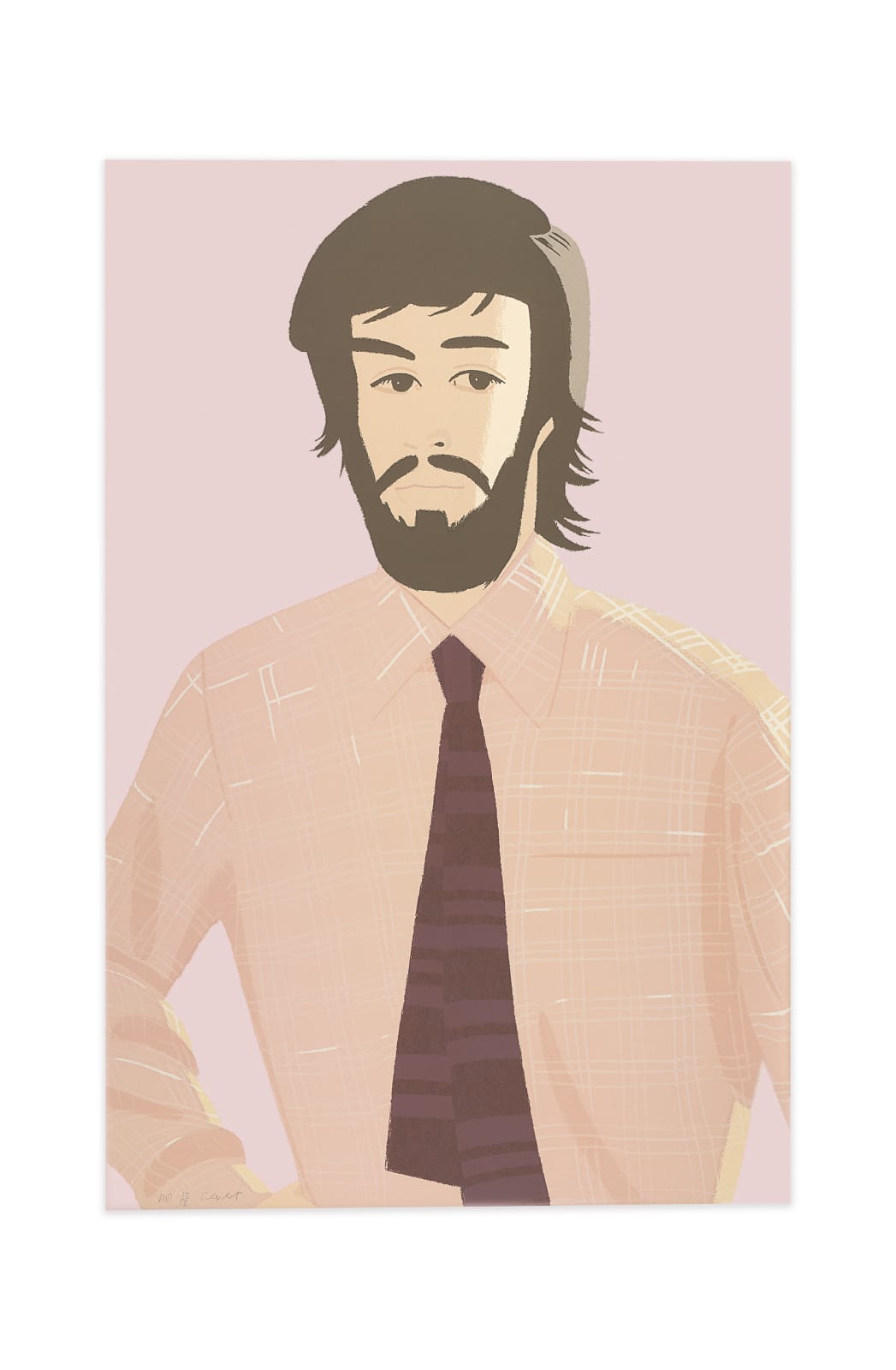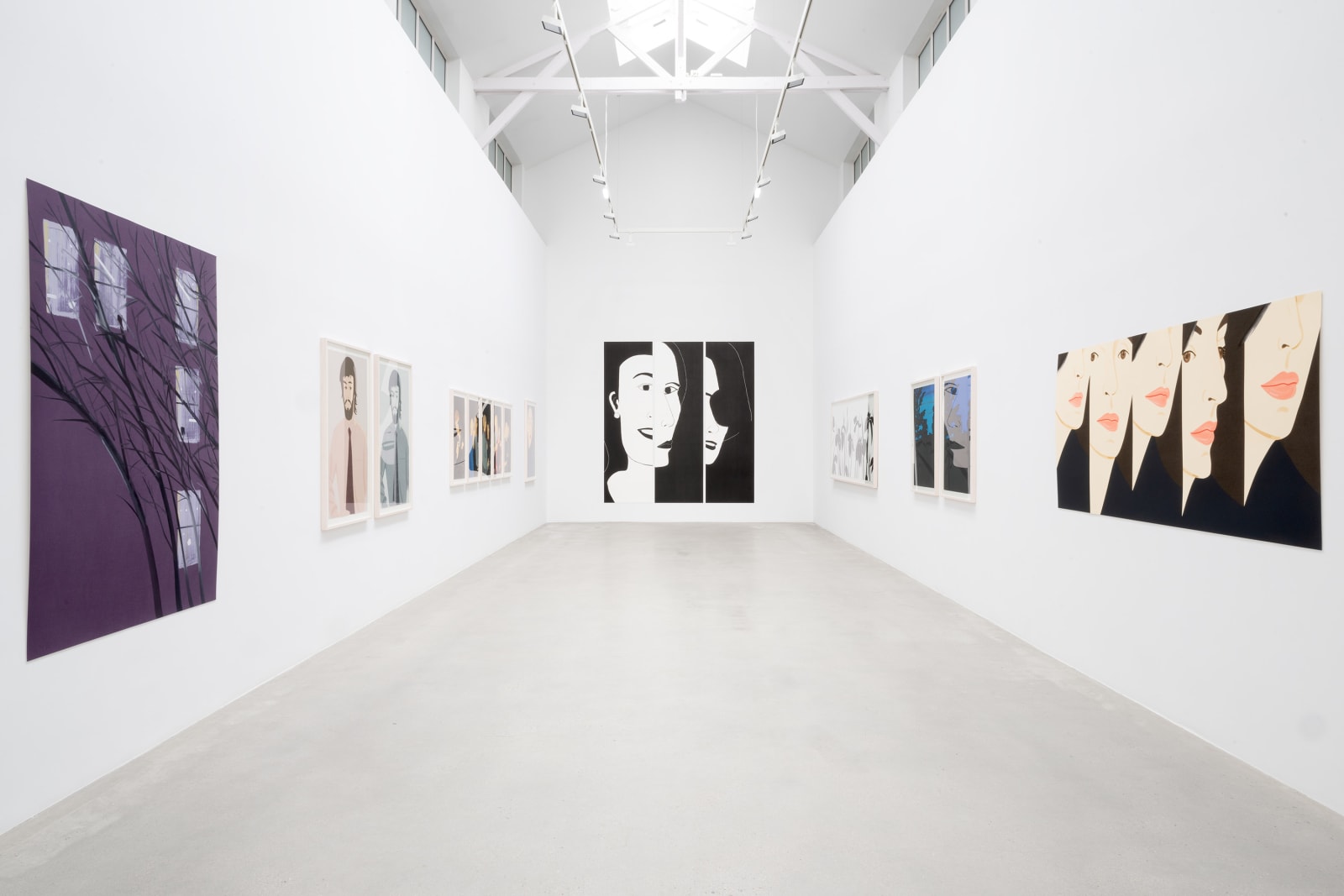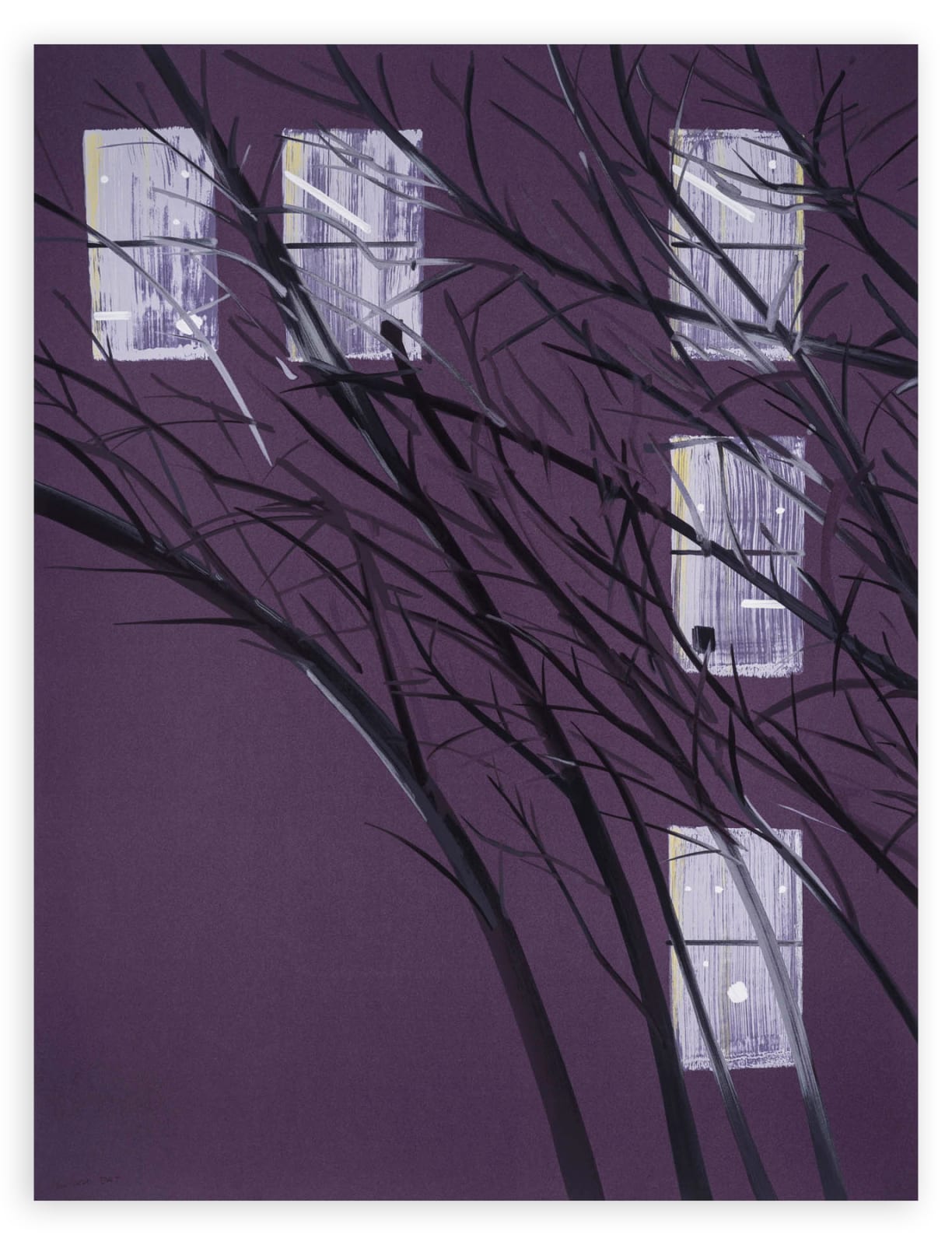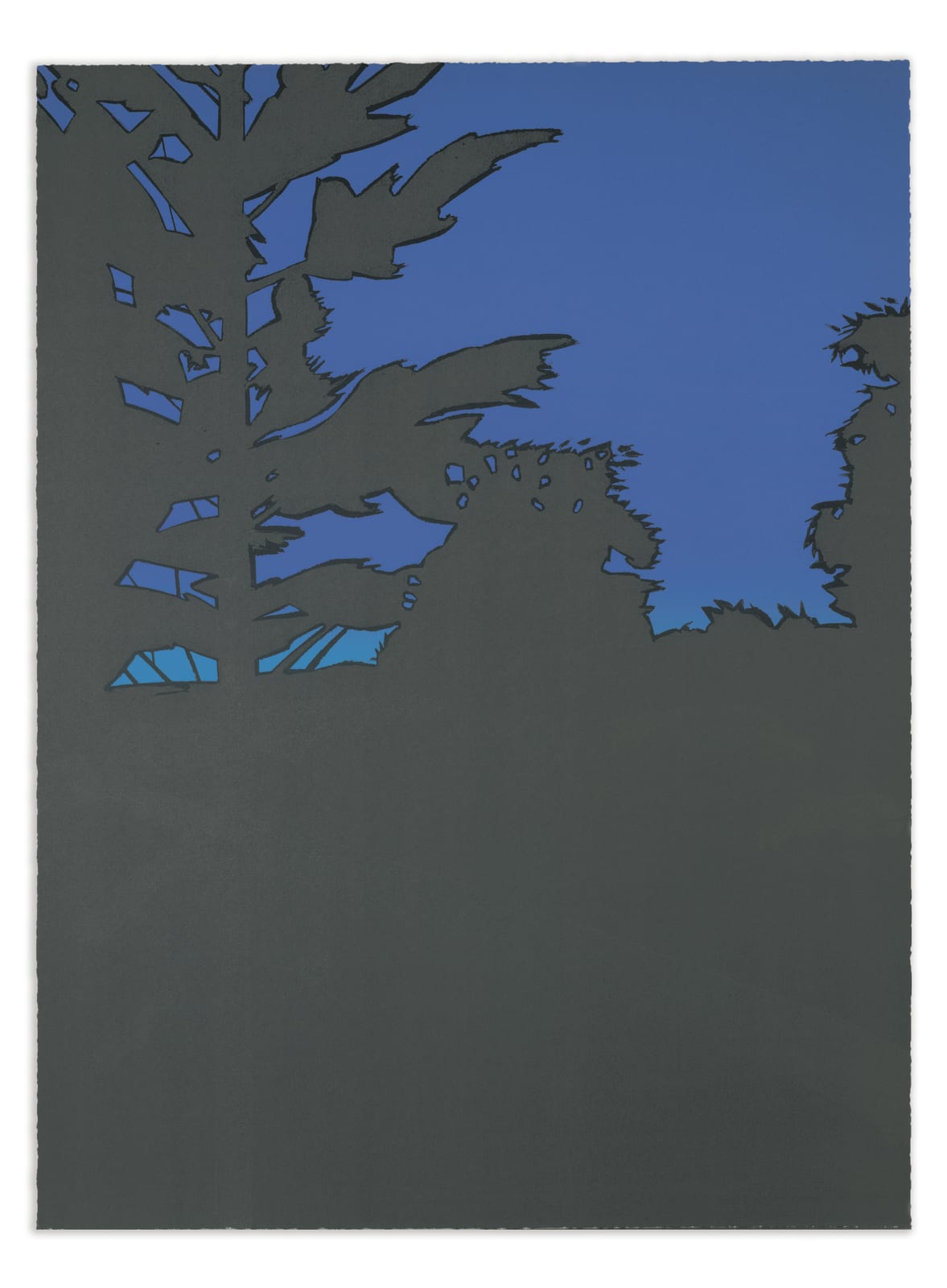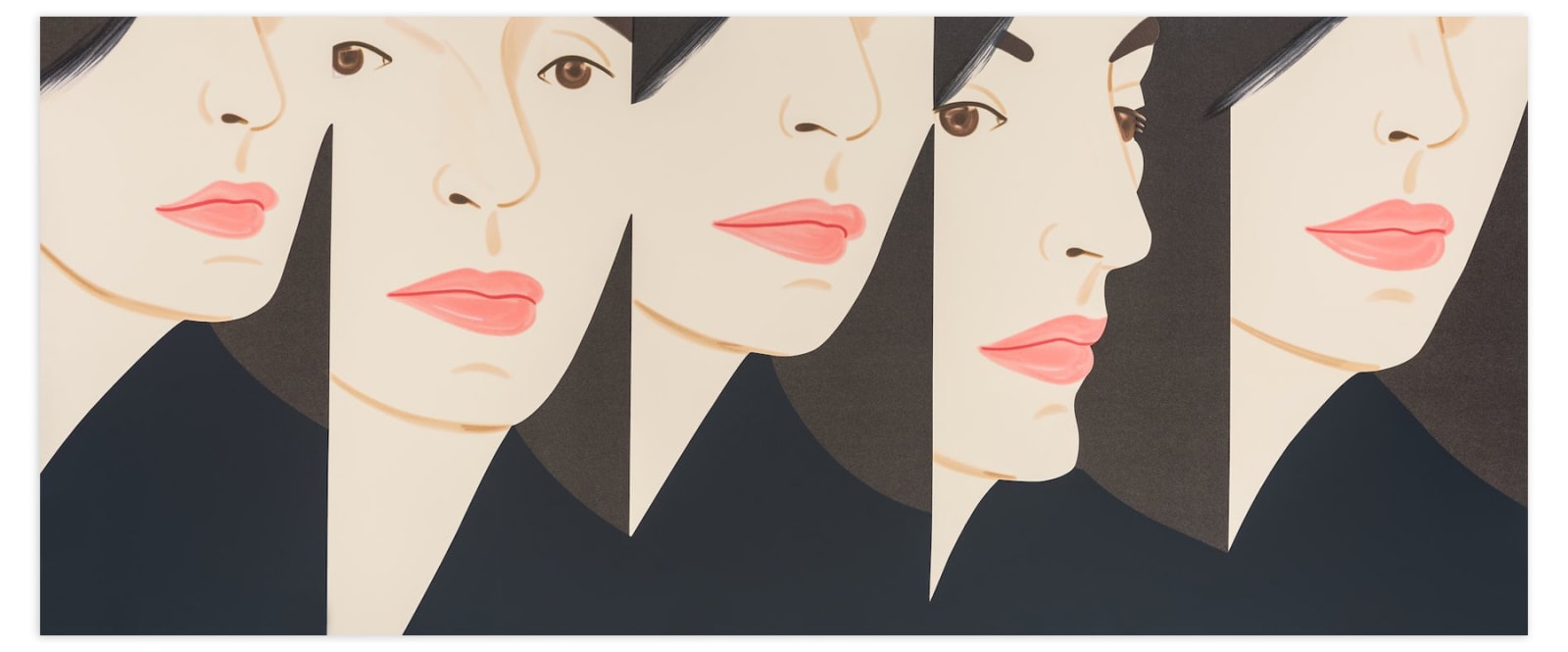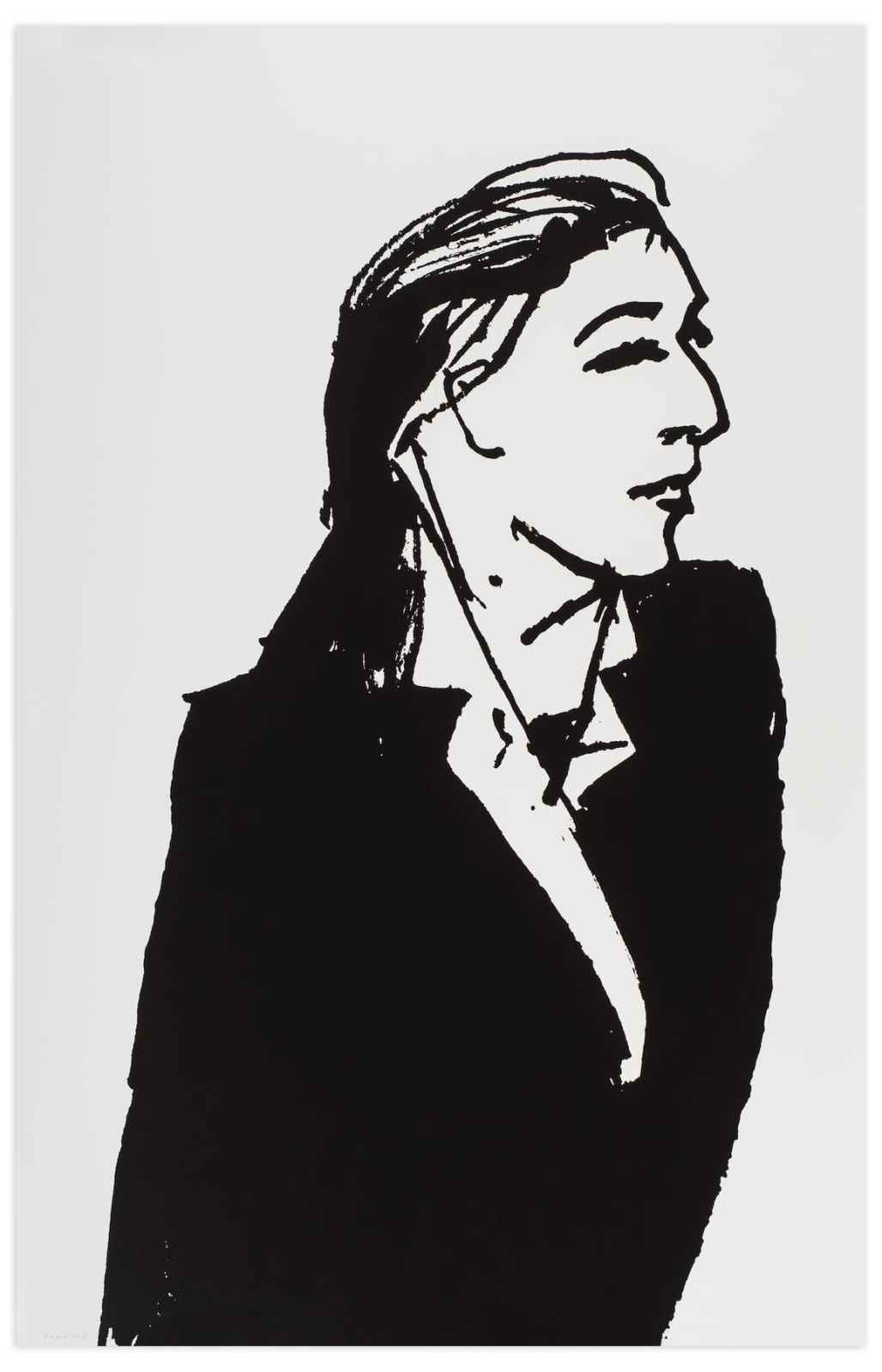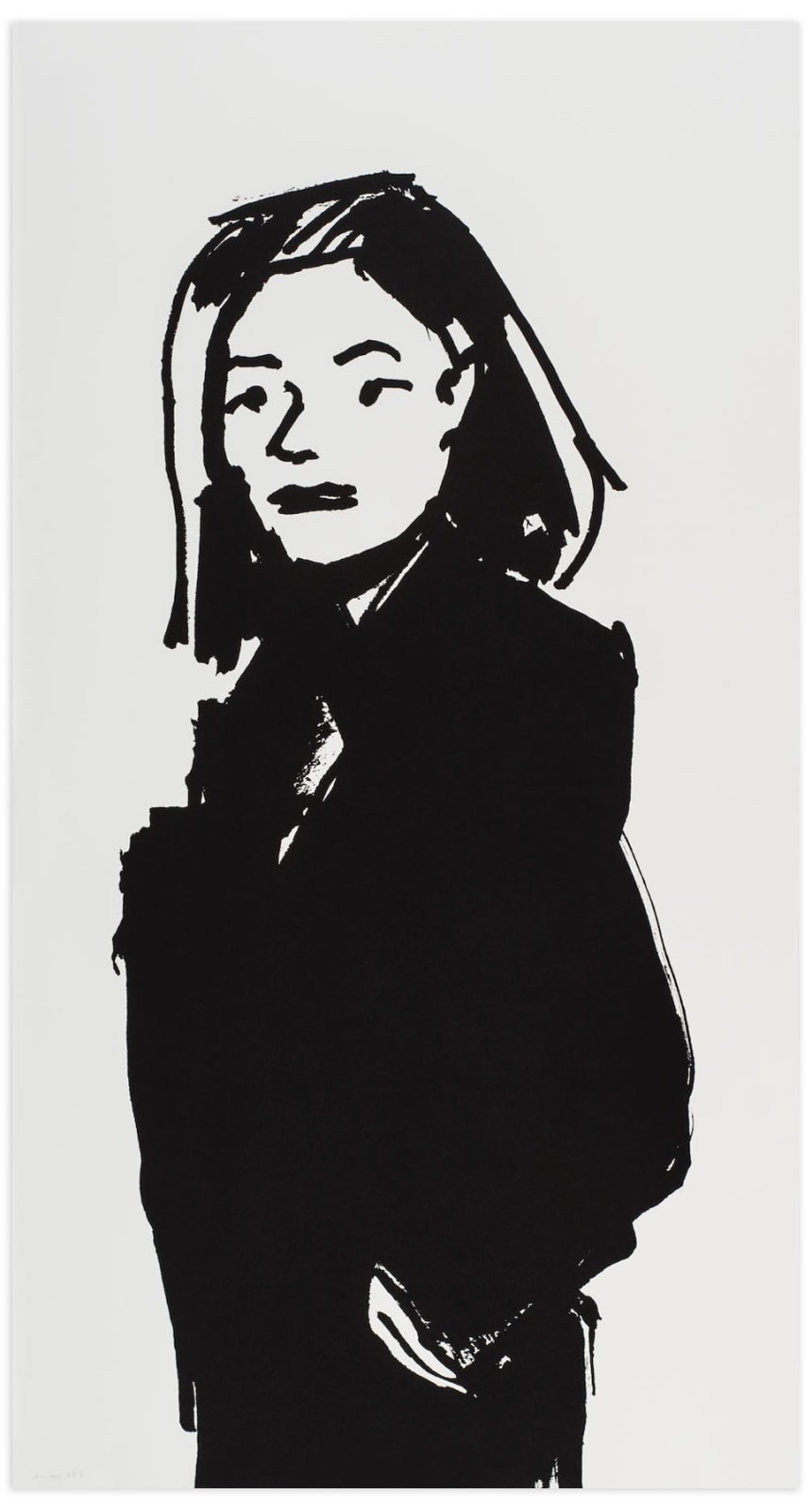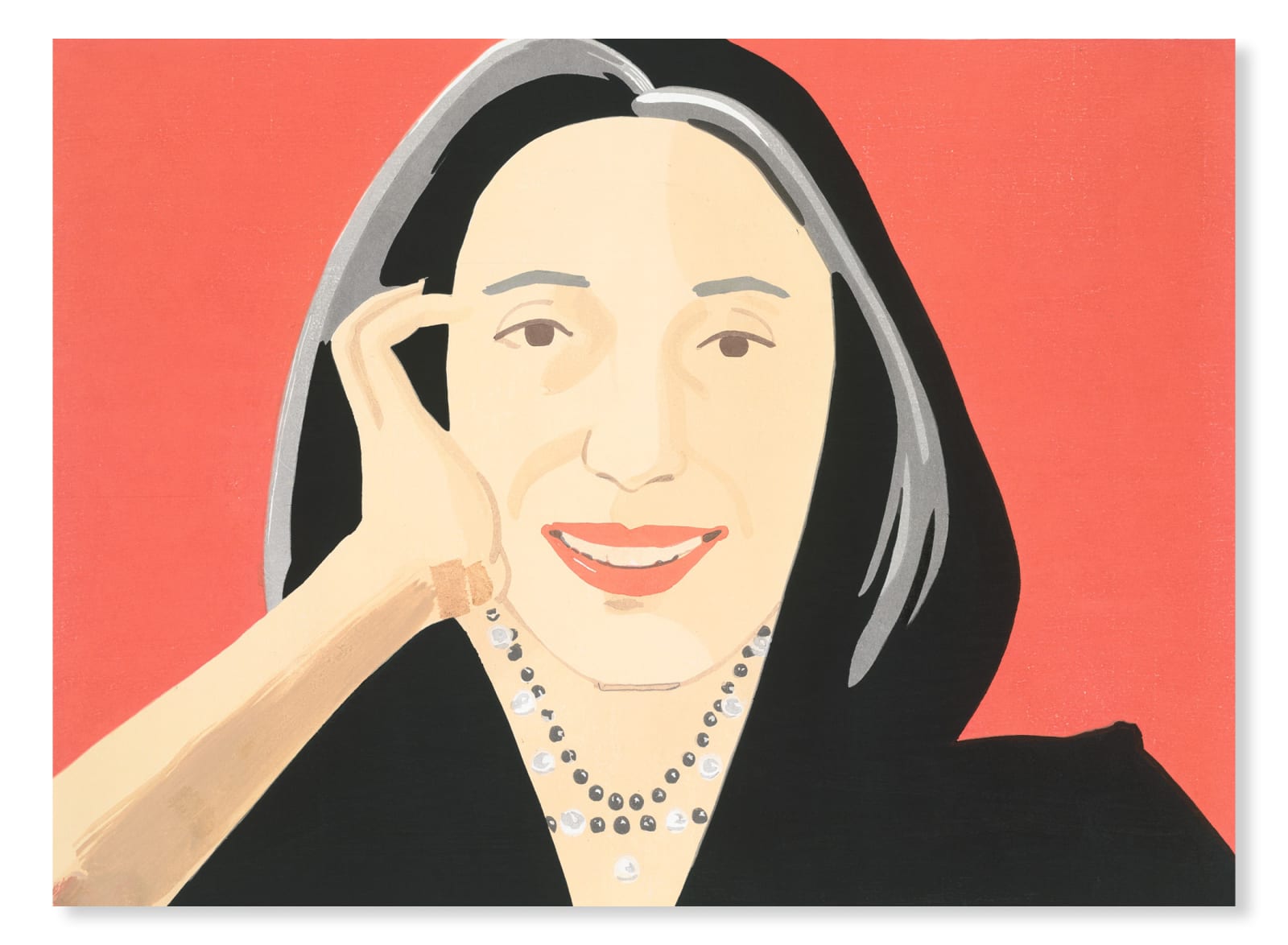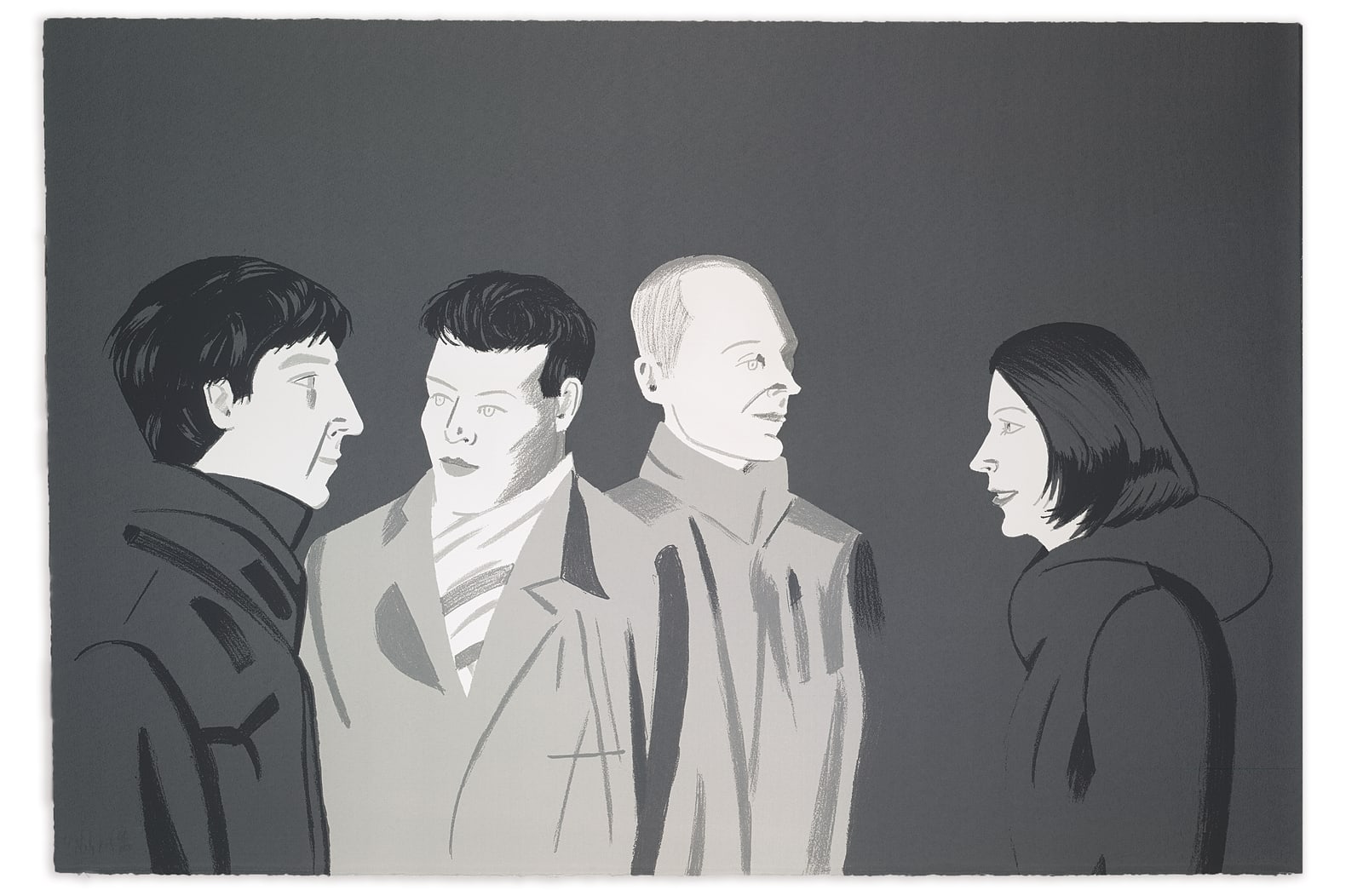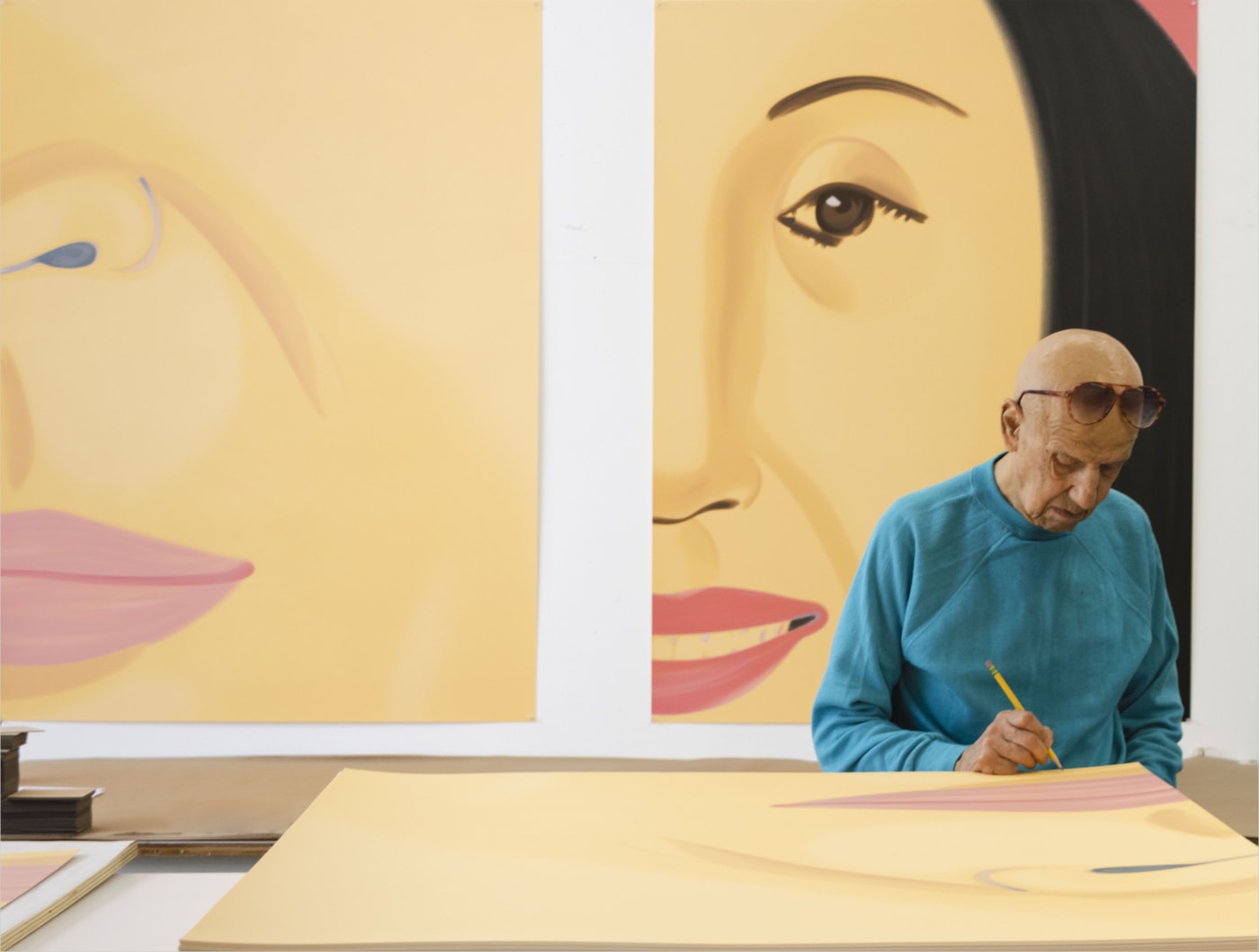The artist had begun experimenting sporadically with printmaking in the 1950s, making etchings, linoleum cuts and stencils, before abandoning the medium for a decade, only to return to it in the 1960s, when the Pop Art movement, to which Katz was an important precursor and contributor, was broadening definitions of artmaking to include mechanical reproduction and rendering techniques. As Katz puts it, ‘there was a place in the world for prints’.
The works in the exhibition represent familiar imagery from across key facets of Katz’s practice, from closely cropped, cinematic portraits to glinting seascapes and leafy landscapes depicted with defined horizon lines and an extraordinary economy of means. Over the course of the artist’s career, printmaking has also served as a springboard for encountering new technical challenges and, by confronting them, achieving new results. His early experiments in silkscreening, which harnessed the medium’s predisposition to a crisp articulation of forms through two-dimensional expanses of single colours, influenced Katz’s use of planes of flat colour atop monochrome backgrounds in his paintings, which have become characteristic of his style.
Since 1965, printmaking has continuously held an important place at the heart of Katz’s practice, and reveals a more collected, measured side to his artmaking. In his canvases painted from life, often en plein air, in the manner of the Impressionists, he is known for his ability to encapsulate his fleeting impression of a scene through quick, syncopated brushwork and a wet-on-wet technique, where the entire composition must be finished before the first layer has time to dry. The process of making a print, on the other hand, requires more intention and calculation, making for compositions that the artist describes as more ‘stabilised’ than his paintings. As such, printmaking has often served, for the artist, as a means to develop, refine and reflect on the motifs in his paintings.
Although widely known for his use of colour, Katz began printing in black and white in the early 1970s, a practice he has continued until the present day. Several of the most recent works in the exhibition testify to the importance of monochrome in his printmaking practice. Monumental black and white silkscreens and linoleum cuts from over the course of the last decade depict figures in high contrast, several of them inspired by crowds of shoppers, surrounding viewers like faces in a bustling crowd.
When I do people, they’re supposed to be a specific person, and that’s where it separates from Picasso and Matisse. They use a more generalized form. But then since they are symbols, they shift. It becomes Ada, then it becomes ‘beautiful girl’. And then it becomes something else. With all of it, it’s symbols. — Alex Katz
I wanted to have a show with big prints. And I haven’t, and it’s awkward to do them, to make these large prints. But I like the idea of large prints. They’re different than a painting. And as I got older, I got more involved with the idea of classic art, which is big and impersonal. And Giotto would be the tops on that. The painting world had gone commercial, it was going to Pop Art. And I feel I was maybe the last bohemian painter. — Alex Katz

